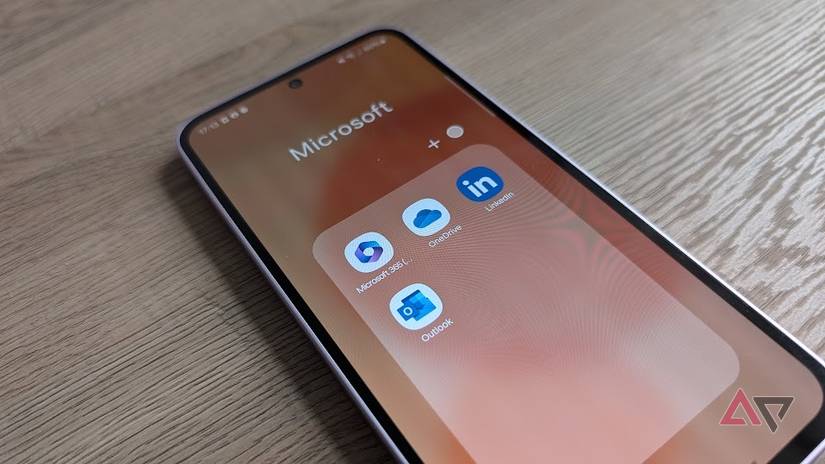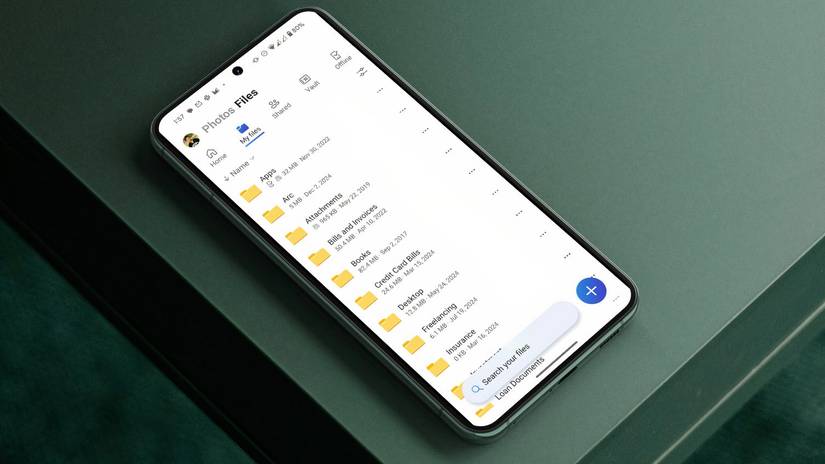Google offers everything from search and email to cloud storage and task management on Android. It’s the default choice for most users.
For one radical month, I swapped every one of those default apps for Microsoft’s challengers: Outlook, OneDrive, Edge, and the full Office suite.
I wanted to know if Microsoft’s Android experience is as feature-rich and seamless as its desktop offering, and if it provides a viable path to replace the Google ecosystem on Android.
Microsoft apps are more feature-rich on Android
Microsoft apps on Android are more feature-rich than their Google counterparts. While Google’s strength is integration and simplicity, Microsoft pulls ahead with raw, professional functionality.
Let’s take Outlook, for example. Although Gmail is fantastic for a clean, search-centric inbox, Outlook offers superior management features that elevate daily productivity.
Focused Inbox is Outlook’s killer feature that intelligently separates my most important emails from regular ones (promotions, newsletters, social, and more).
Also, unlike Gmail, which splits Calendar and Contacts into different apps, Outlook offers everything in a single unified mobile app.
And then there is OneNote versus Google Keep. Microsoft’s note-taking app packs a punch with a dedicated Home menu, Sticky Notes integration, drawing tools, password-protected sections, and more.
It’s not even a competition.
The same stays true for Microsoft To Do, which is a far better offering than Google Tasks. The My Day view is excellent for keeping track of important tasks, and it supports natural language for adding quick tasks as well.
Even when it comes to web browsing, I prefer Microsoft Edge over Chrome. Edge has a customizable home, offers Collections to manage notes and tabs like a pro, and has tighter integration with my Windows desktop.
Microsoft also provides an excellent array of widgets that are crucial. I used widgets for Microsoft To Do’s My Day, Outlook Calendar, and OneNote’s quick capture, and filled up my home screen with Microsoft’s services instead of Google’s.
Overall, Microsoft is still the king of productivity on Android. If you don’t want to compromise on features, you can’t go wrong with their offerings.
I didn’t try Word, PowerPoint, or Excel much during the month-long experimentation. These apps are best served on the desktop, where they easily beat Google’s web-based offerings.
The collaboration experience is a hit-and-miss
For my deep dive into the Microsoft ecosystem on Android, OneDrive was the one that truly surprised me.
The outstanding feature is Personal Vault. It’s a highly secure folder within my OneDrive storage that requires a second layer of identity verification (like a fingerprint or PIN) to unlock.
I use Personal Vault for my sensitive files like my passport, credit card, tax documents, bank documents, and more.
I was also pleasantly surprised by the Gallery-focused media tab, which puts my photos and video front and center. I can create albums, use AI-powered search, and even glance over specific moments from last year.
It’s not as feature-rich as Google Photos, but OneDrive gets the job done when dealing with my ever-growing media collection.
The collaboration experience is also secure. When sharing sensitive media or documents, I can set an expiry date and ensure that it becomes inactive after a set time.
That being said, Google Drive provides a better collaboration experience because everyone has a Google ID.
When I needed to share a co-authored document for a project, I could instantly send a Google Drive link to virtually anyone I know, confident they already had a working Google account to view or edit the file.
When I send a direct, secured OneDrive link, I sometimes hit a wall where the recipient either didn’t have a Microsoft account or didn’t want the hassle of creating one just to view a single file.
So, while OneDrive is technically superior in its feature set, Google Drive retains the social advantage of seamless sharing.
Google apps have a better UI and ease of use
Even though Microsoft has done a solid job with the user interface on Android, it still lacks the polish of Google’s offerings.
Google’s design language, now evolving into Material 3 Expressive, is just plain better suited for mobile and the Android aesthetic.
Whether it’s Gmail, Keep Notes, Tasks, Docs, or Drive, these apps are clean, colorful, and intentionally minimal.
Google apps, with their playful design and quick simplicity, felt lighter, faster, and more natively integrated.
I would love to see Microsoft apps getting a Material Expressive makeover in future updates.
The Microsoft takeover
The biggest takeaway from this month-long experience is that the battle between ecosystems has truly changed.
While it’s impossible to completely detach an Android phone from its Google infrastructure (after all, who can replace Play Store, Maps, and even Drive for mobile backups?), Microsoft has built a capable and cohesive platform.
Apps like Outlook and OneNote delivered a more feature-rich experience than their Google counterparts, especially for anyone tied to a Windows PC.
While Microsoft may win the features war in certain areas, Google still dominates in real-time collaboration and ease of use on Android.
For those willing to accept a few trade-offs, a Microsoft-centric life on an Android phone is not just possible – it’s surprisingly productive.



